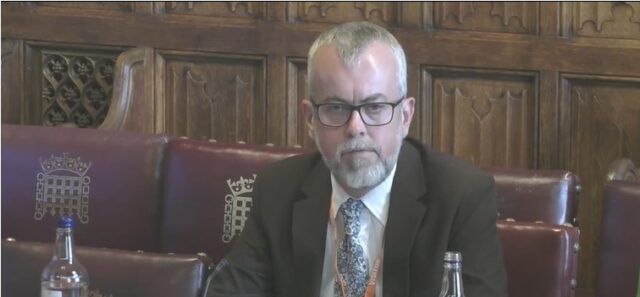Delivering infrastructure will be the key challenge for the Government’s new towns programme, a professor of planning has told a parliamentary committee. The new towns are part of the government’s target to build 1.5 million new homes over this parliament.
Professor John Sturzaker, Ebenezer Howard Chair of Planning at the University of Hertfordshire, told the Built Environment Committee of the House of Lords that public acceptance of the new towns would be heavily influenced by how well important infrastructure requirements are realised in advance.
Professor Sturzaker said most opposition to development is not about matters of principle nor self-interest, but about communities being listened to and having their concerns addressed.
Giving oral evidence yesterday (13 May) to its inquiry into the practical delivery of new towns, he told the Lords committee that ensuring things like roads, village halls, schools, shops and GPs surgeries were available or were delivered, “helps to build communities from the ground up”.
However, Professor Sturzaker warned that the government also has a job on its hands to communicate more effectively about the benefits of new towns.
“The language of ‘the blockers’ isn’t helpful”, he said, adding that, “there is more to do to get the positives over”.
Professor Sturzaker, who supports the idea of new towns, also cautioned against an adversarial planning process, saying that “a more positive discourse” would arise if planning remains a democratic exercise and that local-led design of new housing reflects the communities where people live and is not over-centralised.
Local authorities should deliver the detailed designs but government can support this by laying down minimum standards such as insulation and the availability of green spaces.
Good quality affordable and social housing, he said, must be part of local delivery and built with enough quality to last for decades to come, which “must not be watered down” during the delivery process.
Professor Sturzaker said that one critical factor was thinking in advance about how to plan and work across local authority boundaries and consider how people move around with an emphasis on public transport, and where people would find work.
This is especially true if a network of smaller new towns is envisaged such as of 10,000 new homes.
Powerful Mayors can be supportive but what will succeed best is a “coalition of support through strategic and local planning systems”.
Professor Sturzaker, who is currently conducting work into new towns on behalf of the Royal Town Planning Institute, was joined by witnesses from the Campaign to Protect Rural England (CPRE) and the campaign group for better housing standards, the YIMBY Allianc



